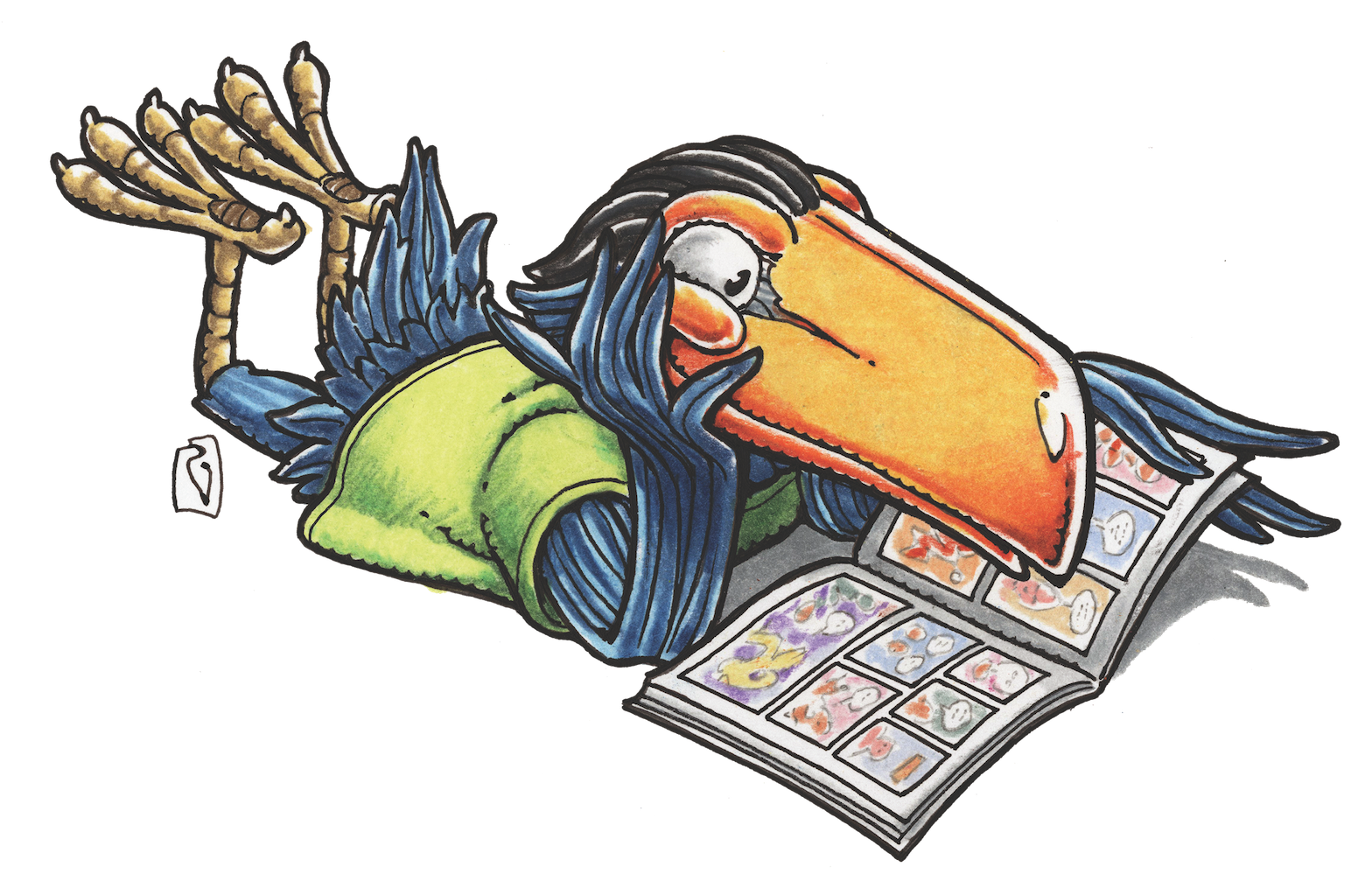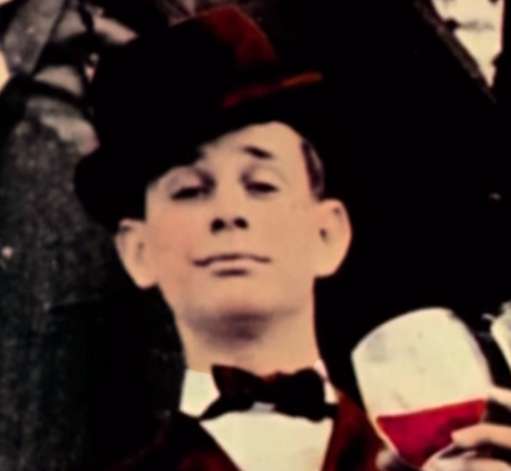JESSE HAMM’S CAROUSEL
Carousel 018: Anatomy


We hear a lot about how we must improve our grasp of human anatomy. Complaints about anatomical errors are perhaps the common criticism I overhear when artists receive portfolio reviews. And although anatomy is of special concern for artists drawing superheroes, a good grasp of anatomy is important in any genre; the awkwardness of a poorly-drawn figure is always a distraction. Furthermore, since comics lack motion and sound, a character’s body language is crucial to conveying his moods and personalities—and your fluency in body language is improved by studying the figure.
There are countless books on anatomy for artists, a fact which can be daunting for students trying to choose the right book. Even after settling on a good book or two, the student quickly finds that there are countless muscles and bones to memorize, and countless angles and poses in which they may appear. The task seems endless!
The solution is to gain a basic understanding of anatomy at the outset, and then add bits of knowledge to it throughout your career. It’s like a permanent Christmas tree: you buy the tree one year and add a few decorations, and then you keep adding decorations, year after year. To that end, here are ten points about anatomy that should provide you with a useful framework to build on.
1. Posture
More than anything else, what “sells” a figure drawing is authentic posture. A figure with accurate muscles but inauthentic posture will never look as convincing as one with credible posture, even if the latter figure’s bones and muscles are wrong. How we stand and carry ourselves identifies us better than the sizes and shapes of our femurs or biceps. This is how cartoon animals can look convincingly human despite their inhuman anatomy. Master your figures’ postures, at rest and in motion, and any anatomical gaffes will become trivial.
2. Action Lines
A simple, swooping guideline, drawn along the figure’s spine at the outset of a drawing, will give the pose energy and clarity. Whether a character is resting or in motion, such guidelines—or “action lines”—will help you summarize for yourself the essential shape and attitude of the figure. Following that summary as the drawing develops will unify it, ensuring that your initial vision doesn’t get lost as the limbs and other features are added.
3. Proportion
Like posture, proportion does more to sell a figure drawing than a detailed knowledge of bones and muscles. (By “proportion,” I mean the body parts’ relative lengths and sizes.) A well-proportioned figure whose muscles are drawn badly will look better than a badly proportioned figure whose muscles are drawn well. So, when drawing from life: think first of posture, then of the parts’ proportions. Whether the muscles and bones are drawn correctly is of tertiary concern.
4. Silhouette
A silhouette has more narrative power than the details inside the silhouette (except the facial features). This is because we read a figure’s overall contours before noticing interior detail. It’s easier to see that a figure is hunched over, or waving her arms, than it is to notice whether she has six-pack abs or a tattoo on her neck. Therefore, it’s best to position characters in ways that reveal their attitudes and behavior even in silhouette. Try tracing in outline some of your figure drawings. If you can’t tell from a figure’s silhouette what she is doing or feeling, turn her in your mind until her silhouette reveals those things, and draw her from that angle. Her interior details will still augment her story, but her silhouette will properly do most of the explaining. It’s like passing the ball to your strongest player: let the silhouette carry the game.
5. Clothing
When we study anatomy, it’s easy to lose sight of the fact that most of a person’s body is usually covered in fabric. Artists who spend all their time drawing nude figures often struggle later, when they realize they have no practice drawing the clothing that covers nearly every character. Avoid this trouble by including plenty of clothed figures in your anatomical studies.
6. Eyes, Mouth, Hands
The eyes, mouth, and hands are, in that order, the most important parts of the body for storytelling. In each panel, readers seek out the eyes and mouth first, to see what the character is feeling, and then the hands, to see what the character is doing, or how he is gesturing. So your greatest concern is to ensure that those elements are working—especially the eyes. As Alex Toth once advised: “You can tickle and embellish a face all you like, and it’ll be a total botch, unless you can draw eyes that work … eyes that see.” To ensure that the eyes “see” (i.e., that a character is gazing convincingly in the right direction), begin with the pupils and upper eyelids. Make sure those appear correct, and that they match, and THEN add irises, lower lids, lashes, and other details.
7. Contrast
Perceiving three dimensions in a two-dimensional drawing is always a bit of an uphill battle, but you can make this easier for the reader by using contrast. Contrasting one limb with another, or an edge of a limb with its opposite edge, helps readers differentiate what they’re looking at. For example, draw the flexed side of an arm with bulgy curves, and the taut side with straight lines. The curved lines will contrast with the straight lines to make the limbs’ edges more varied and distinctive. This also helps figures look organic, instead of looking puffy (all curves) or plastic (all straights). Another way to add contrast to a figure is to make sure the left limbs aren’t doing what the right limbs are doing. Avoid symmetry. If the left arm is bent, straighten the right; if the right knee is bent, straighten the left. Variety in your poses will look more realistic and dynamic.
8. Simple Forms
It’s tempting to show off any hard-won knowledge of anatomy by drawing distinct muscles throughout the figure. But in reality, figures reveal their anatomy more by their overall shape than by creases along their muscles. Muscular figures tend to have broad shoulders and small waists, plump figures tend to be pear-shaped, etc. Creases along muscles only emerge occasionally, when the muscles are flexed, and are rarely visible beneath tights or clothing. As da Vinci once wrote: “You should not make all the muscles of your figures conspicuous [or] you will have a produced a sack of nuts rather than a human being.”
9. Balance
To convincingly occupy an environment, figures must maintain (or lose) their balance convincingly. The pit of the throat is generally the center of balance. To draw a stable, balanced figure, make sure the figure’s weight is distributed equally on either side of the pit. (Usually this means placing the feet on either side of it, but sometimes the arms or other parts are involved.) To draw an unstable figure, such as someone stumbling, place more of the weight to one side of the pit, or in front or back of it.
10. Weight
Perhaps the biggest lesson you learn from life-drawing is that every human body—even a fit, slender body—sags and squishes like a rotten tomato. Up to 60 percent of the human body is water, and much beside that is organs, fat, and pliant skin. So, if you want your figures to look real, it’s better to think of them as fleshy sacks of liquid, propped up by bones, rather than as firm mannequins. They don’t float on the page; they’re heavy, they sag. Think of gravity pulling on their weight, and of how the parts flatten and bulge when pressed against each other, or against other objects or furniture. And when drawing feet: first draw a footprint on the ground, and build the foot up from that. This plants the foot properly on the groundplane, giving you a solid basis on which to pile the figure’s tangible weight.
You’ll forever be learning new details about the human form, but these basic guidelines can help you stay on track, and gather your growing knowledge into a cohesive, effective whole.
We’ll be taking a break for December, but I’ll see you back here in January!